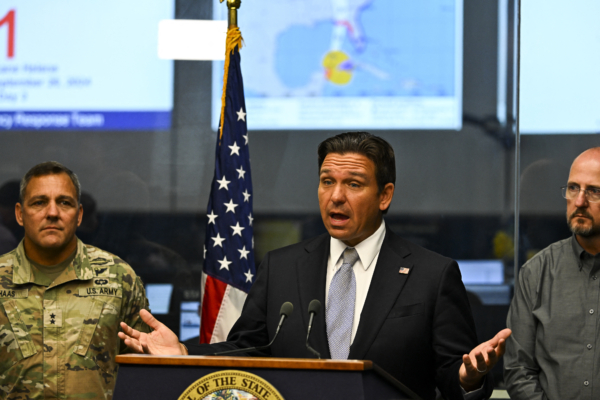Florida is busy preparing for the arrival of Hurricane Helene on Thursday (September 26). Forecasted to be a powerful Category 4 hurricane, it is expected to bring unprecedented destruction to the state’s narrow strip of land. Florida authorities and residents are on high alert, bracing themselves for the impact.
As of early Thursday, hurricane and flash flood warnings have extended far beyond the coast, reaching into central and southern Georgia. The governors of Florida, Georgia, and South Carolina have all declared a state of emergency in anticipation of the storm.
The National Hurricane Center in Miami announced that Hurricane Helene strengthened to a hurricane in the Gulf of Mexico on the morning of September 25, and is projected to make landfall on the northwest coast of Florida on Thursday night as a Category 4 major hurricane.
“It is expected to bring life-threatening storm surges, destructive winds, and flooding rainfall to most areas of Florida and the southeastern United States.”
At this moment, Helene is roaring in the Gulf of Mexico, gaining strength from warm waters. Meteorologists predict it will make landfall in Florida’s narrow strip on Thursday night, with sustained winds reaching up to 156 miles per hour (251 kilometers per hour).
Officials urge coastal residents in the hurricane’s path to evacuate promptly. When the storm surge arrives, sea levels could rise up to 20 feet (6.1 meters).
According to Reuters, Wakulla County Sheriff Jared Miller urged residents to evacuate quickly, as Helene is expected to make landfall there.
“For coastal or low-lying residents, this kind of weather is unavoidable,” he said. “Please obey evacuation orders, time is running out.”
Deputy Director of the National Hurricane Center Jamie Rhome warned that the hurricane will bring “catastrophic” winds to areas along its path.
Rhome stated that Hurricane Helene is expected to make landfall in the Big Bend region of Florida, with storm surges reaching 15 to 20 feet (4.6 to 6.1 meters).
The National Hurricane Center reported that over 40 million people in Florida, Georgia, and Alabama have received hurricane and tropical storm warnings.
Evacuation orders have been issued for coastal areas in the Gulf of Mexico, including Sarasota and Charlotte counties. Dozens of counties have announced school closures, including Hillsborough and Pinellas counties.
Officials in Pinellas County have ordered the evacuation of long-term care facilities, including nursing homes, assisted living centers, and hospitals near the coast. The county is situated on a peninsula surrounded by Tampa Bay and the Gulf of Mexico.
Tallahassee Mayor John Dailey stated that this hurricane could be the strongest storm ever to directly hit the city.
Dailey told reporters on Wednesday, “Helene could cause unprecedented damage, something our community has never experienced before.”
After making landfall in Florida, Helene is expected to bring up to 15 inches (38.1 centimeters) of rainfall to some remote areas, leading to severe flash flooding and urban flooding.
Rhome emphasized that around half of hurricane-related fatalities are typically caused by sudden floods from heavy rains, urging people in affected areas to be extra cautious.
Rhome added that hurricane-force winds are expected to impact an area stretching about 180 miles (290 kilometers) north from Florida’s narrow strip all the way to southern Georgia.
By Wednesday evening, heavy rains persisted in Atlanta, with a Kroger supermarket on the east side displaying empty shelves where bottled water had been sold out. The Atlanta Weather Bureau issued flash flood warnings for most areas of the state.
Charles McComb, speaking to the Associated Press, expressed disbelief that Helene would have such a severe impact on the city located 250 miles (400 kilometers) north of the Gulf of Mexico.
“It’s unique that it’s going this far inland,” Charles said while buying water, bread, and canned meat, expressing concern about power outages.
Rhome reminded people to “prepare for long periods of (power) outages.” Strong winds are expected to topple trees, causing road blockages.

